26+ Sample Dissertation Proposal Forms
-
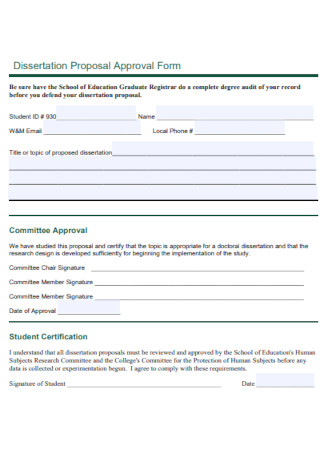
Dissertation Proposal Approval Form
download now -
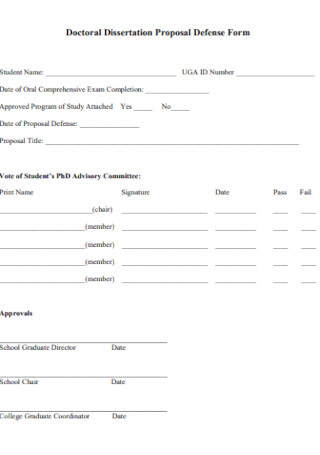
Doctoral Dissertation Proposal Form
download now -
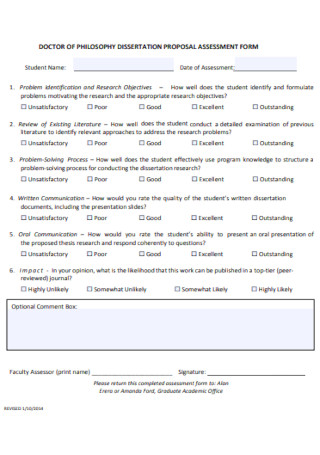
Dissertation Proposal Assessment Form
download now -
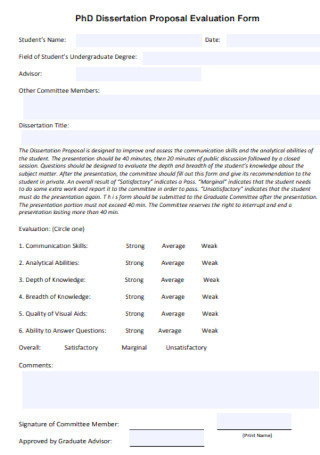
Dissertation Proposal Evaluation Form
download now -

Dissertation Proposal Approval Form Example
download now -
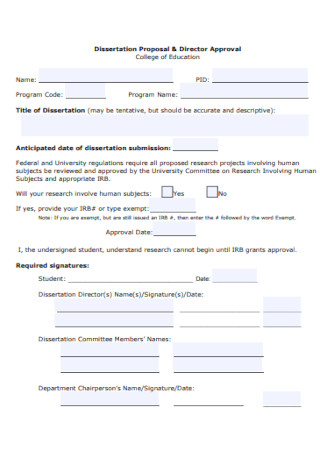
Dissertation Proposal and Director Approval
download now -

Doctoral Dissertation Proposal Defense Form
download now -
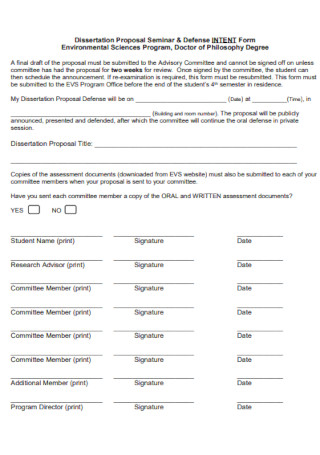
Dissertation Proposal Seminar Form Template
download now -
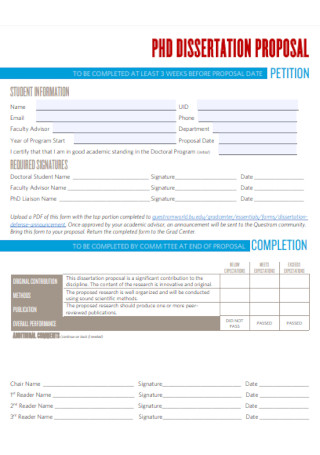
PhD Dissertation Proposal
download now -
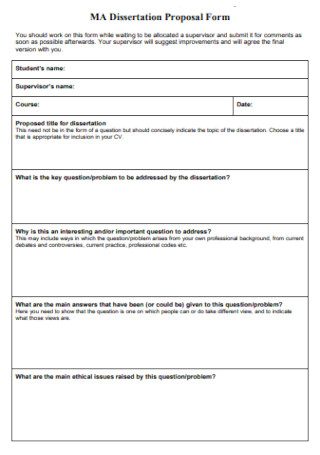
MA Dissertation Proposal Form
download now -
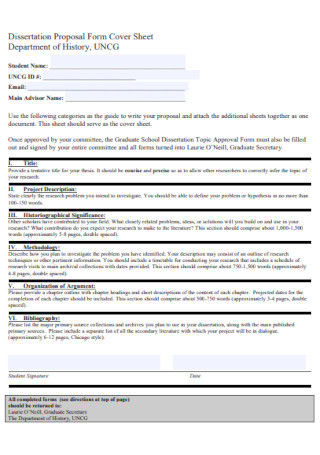
Dissertation Proposal and Cover Sheet Form
download now -
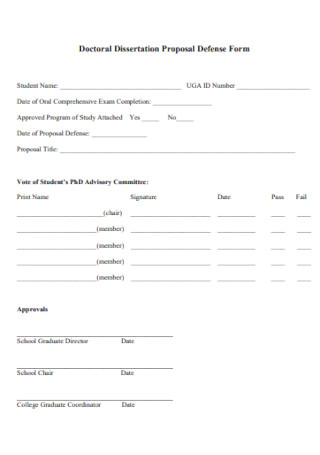
College Dissertation Proposal Form
download now -
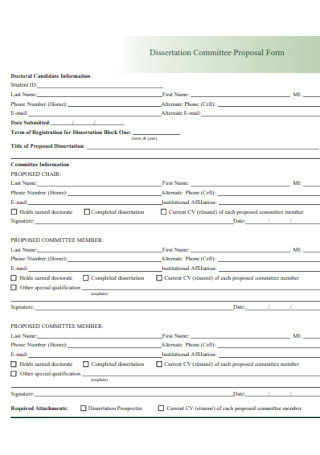
Dissertation Committee Proposal Form
download now -
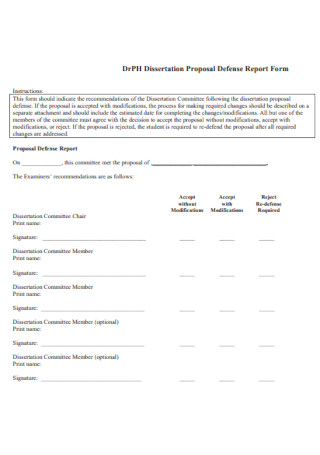
Dissertation Proposal Report Form
download now -
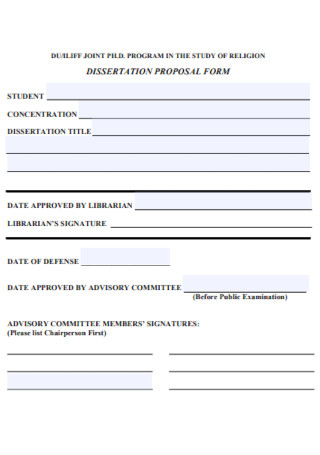
Study Dissertation Proposal Form
download now -
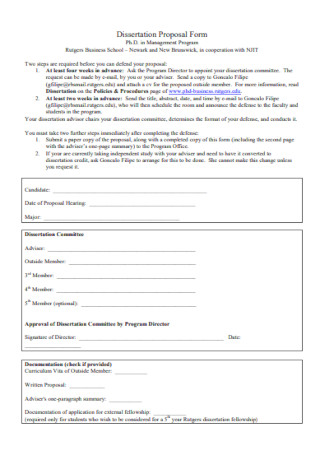
Dissertation Proposal Form Format
download now -
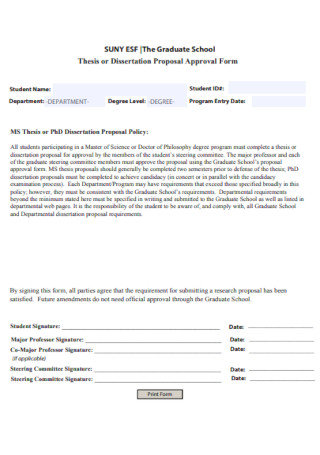
Graduate School Dissertation Proposal Form
download now -
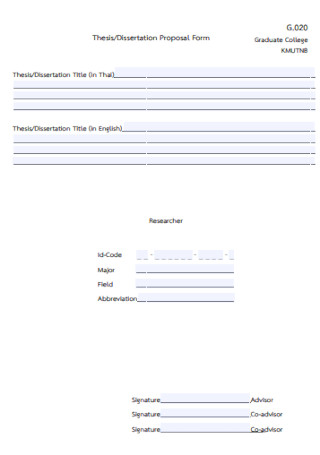
Thesis and Dissertation Proposal Form
download now -
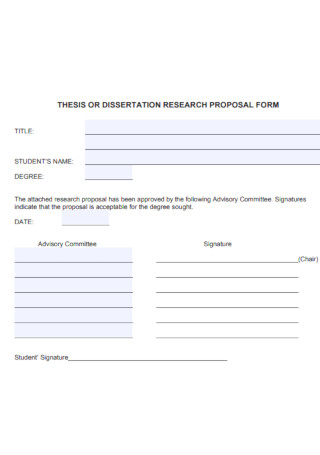
Dissertation Research Proposal Form
download now -
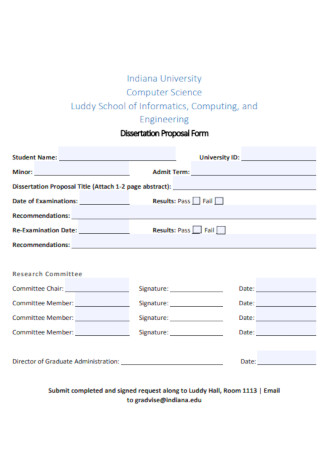
Engineering Dissertation Proposal Form
download now -
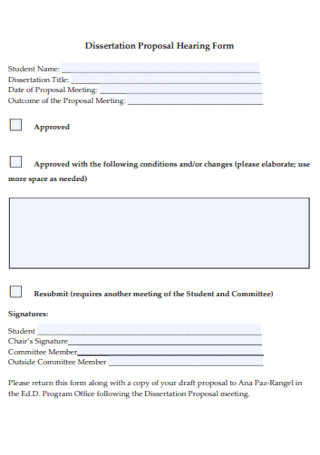
Dissertation Proposal Hearing Form
download now -
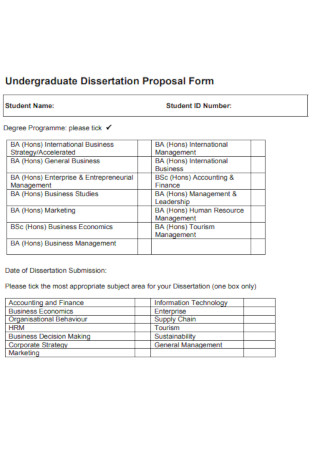
Undergraduate Dissertation Proposal Form
download now -
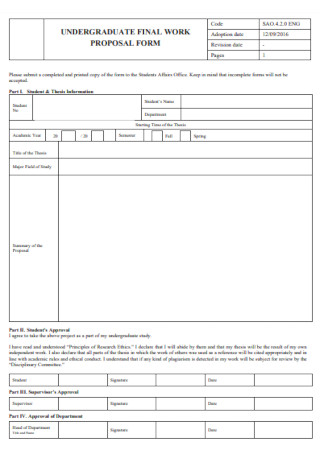
Dissertation Work Proposal Form
download now -
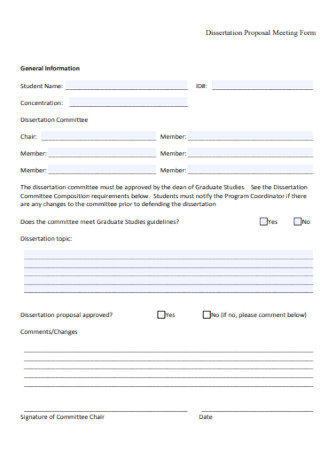
Dissertation Proposal Meeting Form
download now -
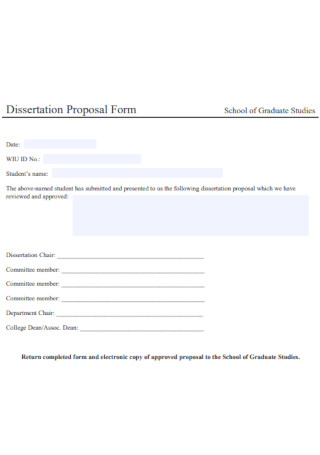
School of Graduate Dissertation Proposal Form
download now -
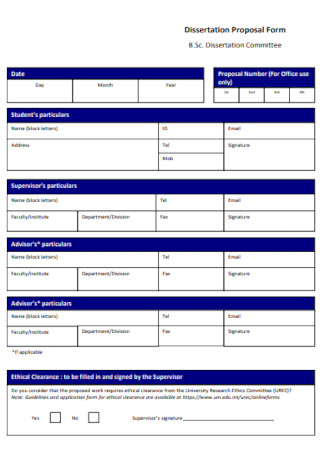
Simple Dissertation Proposal Form
download now -
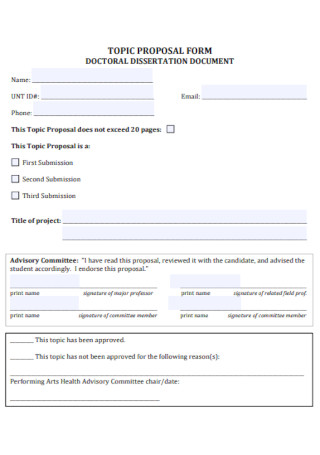
Dissertation Topic Proposal Form
download now
FREE Dissertation Proposal Form s to Download
26+ Sample Dissertation Proposal Forms
What is a Dissertation Proposal Form?
Dissertation Proposal Form Examples
Stages of the Dissertation Process
How to Write a Dissertation Proposal Form
FAQs
What are the main components included in a dissertation proposal?
How long is a dissertation proposal?
What are some common examples of dissertation proposal forms?
What is the difference between a dissertation and a research proposal?
Why do undergraduate and graduate students write thesis and dissertation proposals?
What is a Dissertation Proposal Form?
A dissertation proposal form is an engaging and formal proposal that outlines the main goals, objectives, and purpose of your dissertation plan according to a specific research question or topic. It generally includes a brief project statement, a research design statement, a simple theoretical and area literature review, an explication of how or why the student’s target subject or approach will provide a wholesome contribution to the literature, a projected timeline for research, and a project budget if possible. Bachelor’s degree students, undergraduate students, graduate students, master’s degree students, Ph.D. research students, college students, and other academic researchers create a dissertation proposal form to show what they plan to do in the future.
According to a 2022 statistical report published by Pew Research Center, the number of total enrolled postsecondary students declined by 3.29% year over year and 16.5% of all postsecondary students are in graduate programs. Plus, 12 million, or 60.9% of all graduate and undergraduate students are enrolled full-time. All graduate, undergraduate, doctoral, and Ph.D. research students must be able to demonstrate the importance and quality of their research project and showcase their skills and competence in conducting their proposed research when they make their dissertation proposal forms.
Dissertation Proposal Form Examples
There are broad examples of dissertation proposal forms and technical proposals used by many graduate, undergraduate, master’s degree, and doctoral students in various fields such as business, health and medical studies, psychology, social sciences and history, biological and biomedical sciences and many others. What are some common examples of dissertation proposal forms?
1. Undergraduate Dissertation Proposal Form
If you are planning to pursue an undergraduate degree, write an undergraduate research proposal and fill up the details of an undergraduate dissertation proposal form which includes your name, student ID number, degree program, and date of dissertation submission. It provides the basis of your dissertation or thesis that can help in your academic studies and your professional career in the future. This type of dissertation proposal form must be completed and submitted to a committee of professors in your undergraduate program. To be successful in reaching the highest grade in your undergraduate dissertation, you need to follow specific guidelines and standards of your academic institution.
2. Graduate School Dissertation Proposal Form
Complete a graduate school dissertation proposal form and a graduate school statement if you are one of the students participating in a Master of Science or Doctor of Philosophy degree program. Each department program may have its own requirements, so you need to strictly follow the necessary requirements and guidelines based on your department program. It is your responsibility to be well-informed and comply with all Graduate School and Departmental dissertation proposal requirements. In the graduate school dissertation proposal form, indicate your signature and the signatures of your major professor, co-major professor if applicable, and the research committee.
3. Ph.D. Research Dissertation Proposal Form
A Ph.D. research dissertation proposal form is a dissertation proposal form and a Ph.D. student thesis proposal that must be completed at least three weeks before the proposal date. If you are a Ph.D. student who wants to pursue your Ph.D. research or thesis work, indicate your student information such as your name, school ID number, email address, phone number, faculty advisor, department name, year of program start, and date of proposal. Also, include the names and signatures of your faculty advisor and Ph.D. liaison, as well as your personal signature.
4. Doctoral Dissertation Proposal Defense Form
A doctoral dissertation proposal defense form contains fundamental information of the doctoral student’s research study plan. It includes the student name, UGA ID number, date of oral comprehensive exam completion, approved program of study attached, date of proposal defense, and the title of the proposal. The Ph.D. Advisory Committee will review the proposal and see if they approve it. To show their approval, they will indicate their names, signatures, and date. The school graduate director, the school chair, and the college graduate coordinator will sign for their approvals as well.
Stages of the Dissertation Process
Many graduate, undergraduate, doctoral, and Ph.D. research students are having difficulties in completing their respective academic programs. In order to be successful in earning your chosen degrees, learn and understand the basic stages of the dissertation process. What are the major stages of the dissertation process?
How to Write a Dissertation Proposal Form
Showcase how you take control over certain areas of theoretical and research literature while filling up a dissertation proposal form for your graduate, undergraduate, doctoral, and Ph.D. research, and master’s thesis. Take note of the fundamental steps of writing a compelling and thought-provoking dissertation proposal form in this section.
Step 1: Choose a Dissertation Topic
Be open-minded and flexible as possible as you carefully think to generate worthwhile ideas for dissertation topics. What do you enjoy learning about? Which specific area of study would complement your career goals and aspirations? Visit your campus or university library to search for a few books about the topics you are interested in the past and see if you can ignite your inspiration. You may also attend inspirational conferences, events, and talks. If you get a sudden aha moment for your dissertation while resting, quickly take note of this.
Step 2: Be Specific
Narrow the focus of the topics you have chosen for your dissertation and be specific on your topic so that you can easily build your research questions and proposal title. Go to your selected topic and analyze the existing literature that has been made on that topic. You may corroborate, challenge, extend, or fill a gap that is missing in the existing literature.
Step 3: Select the Methodology
Do you want to use deductive or inductive reasoning? Do you prefer to use quantitative, qualitative, or mixed methods? Are you planning to collect primary data or secondary data, or both? Select the proper methodology that is suitable for you and that will improve the accuracy and validity of your dissertation.
Step 4: Determine the Feasibility
Check if your dissertation project is feasible. Make sure that you are able to complete the dissertation over a specific time frame that includes planning, research, and writing. Determine if you will have sufficient time to accomplish the project. How would you access the participants? Highly consider if your dissertation will be approved by the Ethics board of your college, university, or graduate school. Consult your personal tutor or mentor for advice concerning your dissertation.
Step 5: Write the Dissertation Proposal Form
Use a sample dissertation proposal form to fill up the details of your dissertation. Write the research background, aims and objectives, and methodology. Include the introduction of your dissertation in the last part of the proposal. Construct the timeline of your dissertation and break down your strategy into weekly goals so that you can easily track your progress. Scan your dissertation proposal form and revise it if necessary.
FAQs
What are the main components included in a dissertation proposal?
The main components included in a dissertation proposal are a brief introduction to your topic, goals and objectives, a clear literature review of the current state of knowledge and current research undertaken in your field, a cohesive outline of the proposed methodology you will use, an in-depth discussion of the possible implications and limitations of your research, and a well-structured bibliography of relevant sources.
How long is a dissertation proposal?
A dissertation proposal should be 15 to 20 pages long.
What are some common examples of dissertation proposal forms?
Some examples of dissertation proposal forms are doctoral dissertation proposal form, Ph.D. dissertation proposal, college dissertation proposal form, dissertation committee proposal form, study dissertation proposal form, graduate school dissertation proposal form, dissertation research proposal form, engineering dissertation proposal form, and undergraduate dissertation proposal form.
What is the difference between a dissertation and a research proposal?
A dissertation is a comprehensive report that includes a research interest statement and that explains your research study as it aims on in-depth investigation of the specific issue or problem. A research proposal is a document consists of the primary research goals, objectives, purpose, methodology, and desired outcomes as it informs the audience about the significance and value of your proposed research study to the people.
Why do undergraduate and graduate students write thesis and dissertation proposals?
Undergraduate and graduate students including Ph.D. and doctoral students write thesis and dissertation proposals because they need to provide the overview or summary of their proposed plan of work which includes the general scope of their research study, research methodology, and the overall significance of their research project. These documents help them to inform others what they want to study, how they will study the research topic, why the research topic needs to be studied, and when they intend to perform their work.
Dissertations are fundamental tools for graduate, undergraduate, master’s degrees, Ph.D., and doctoral students to fully express their academic interests and prepare themselves for the achievement of their career goals in the future. Structure your academic proposal for your dissertation properly while including the vital components of your dissertation such as the title, introduction, research background, aims and objectives, methodology, limitations, timeline, draft conclusion, and references. Freely use our sample dissertation proposal form templates that you can easily download such as dissertation committee proposal forms, graduate school dissertation proposal forms, and dissertation research proposal forms.
